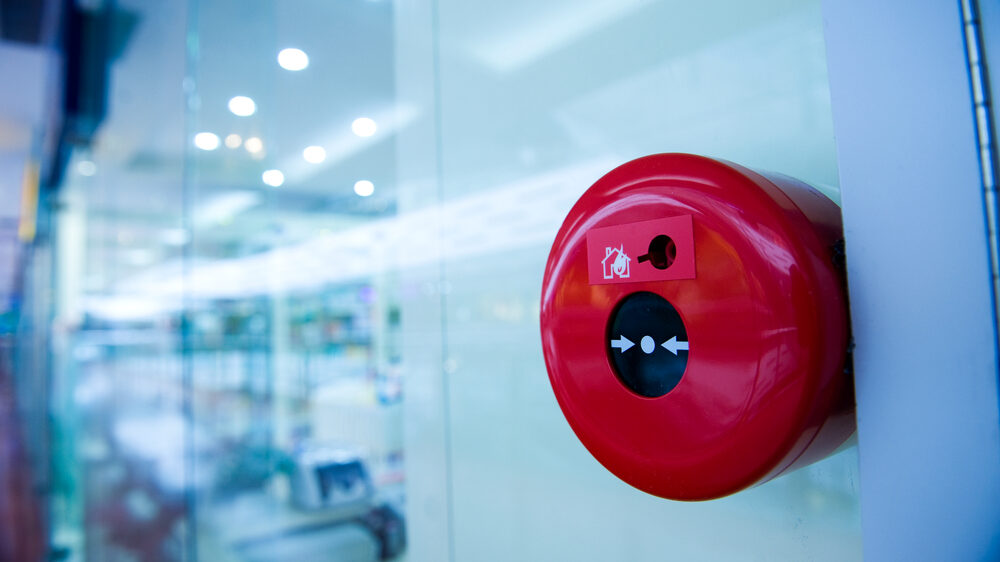Fire industry professionals’ reflections on 2021 and predictions for 2022
- January 4, 2022
- 11:42 am


Iain Hoey
Share this content
With 2022 now fast approaching, we’ve spoken to several fire industry experts to hear their views on what the progress of the past year will mean for fire safety in construction. They’ve also shared their predictions for the year ahead.
There’s no denying, 2021 has been a challenging year in the construction industry. The pandemic continued to disrupt normal business activities, and combined with the effects of Brexit, the outcome was supply chains pushed to breaking point. In particular, material supplies became scarce and build timeframes and budgets went out the window for countless projects.
But it wasn’t all doom and gloom. Despite these challenges, COP26 finally brought sustainability to the forefront, globally, in every industry, and investment in R&D remained a high priority for many manufacturers looking to bring better quality and safer products to market.
Moreover, 2021 finally saw developments in The Building Safety Bill and Fire Safety Act. It is hoped the addition of these meaningful sanctions will prove to be a powerful deterrent to those few companies who haven’t yet prioritised safety.
On what the industry can expect to see in 2022, Ian King, COO, Zeroignition comments: “Looking forward, innovation and sustainability are recurring themes we are hearing loud and clear industry-wide. I think 2022 will bring greater focus on building with wood, not only to allow faster and lower-carbon builds, but also to increase the amount of off-site construction. One of the greatest benefits of modular construction is the enforced quality control.
Looking forward, innovation and sustainability are recurring themes we are hearing loud and clear industry-wide.
Ian King, COO, Zeroignition
“Within an off-site ‘factory’ type environment, greater safety checks can be made and monitored. This will help ensure each component meets the acceptable levels of industry standards and performance, including fire. In turn, this can help improve the integrity of the build quality in the finished product.
“There is no doubting, materials and labour shortages are likely to continue well into 2022, and this has the very real potential to negatively affect product specification especially in relation to fire. The risk is that specifiers scramble to get their hands on products to move builds along, without meticulously confirming they really are fit for purpose.
“As the Grenfell Inquiry continues, it will remain front and centre in the news, as it should. Progress will only be guaranteed when the industry and its regulators finally stand up, pay attention and commit to change.
“Let’s hope that the Government allocates a proportion of the intended investment to support third party product testing facilities. Right now the existing labs are facing significant backlogs and this is seriously hampering change and slowing down entry to market for new, safer products.”
Ben Hancock, Managing Director, Oscar Acoustics adds: “Fire safety should always be a top priority when considering the right acoustic solution and we’ve seen more interest around this topic than ever before from customers. With the new changes due to come into force around the Building Safety Bill, we anticipate this will continue as building owners look to prove the safety of structures.
“As well as presenting significant risks to staff, a fire breakout can also be devastating in other ways, such as destroying commercial goods if they are left in a single location. However, it is possible to combine acoustic comfort with fire safety. We expect to see more specification of acoustic sprays that go above and beyond Approved Document B fire requirement (Class 0 to BS476 & B-s1,d0 fire rating). As they provide little to no smoke and absolutely no droplets in the event of a fire, building owners are given peace of mind that it will help assist in the safe escape of occupants, should an event occur.”
Smart workplace
Erik Boyter, CEO, WindowMaster believes that a shift towards smart technology could offer flexible solutions this year. He comments: “The world of work is undergoing a seismic shift towards being more flexible and accommodating, while UK government marches on towards Net Zero 2050. Smart buildings are one design approach which can support both these efforts.
“A crucial element of the future smart workplace will be high-quality, low-carbon natural ventilation, optimised through good control strategies, such as night cooling. Using cooler night time air to ventilate a building at night helps reduce peak temperatures during the day. However, keeping windows open out-of-hours can be a security, and insurance, risk when not done properly.
“Automating windows with intelligent controls can help overcome these concerns by offering accurate positioning to the millimetre. To further minimise risk, windows used for night cooling should be located at a higher level. Intelligent automation can be combined with internal courtyards, CCTV and PIR detectors for a robust and secure night cooling strategy.”
Matt Ryan, UK Country Manager for PlanRadar: “With the impending Fire Safety Act due to come into effect in 2022 or 2023, we foresee that more building owners and portfolio managers will contractually require the use of digital tools to log the execution of fire safety measures. One concern is that fire safety professionals will struggle if they don’t adopt digital platforms and solutions to help them meet new, more stringent reporting standards.
“There’s no doubt building owners and asset managers will already be increasing their fire safety protocols in advance of the new legislation, and digital platforms and apps that allow site staff to easily record and log that work was carried out to the proper standards will be a crucial part of improving overall fire safety and compliance.”



